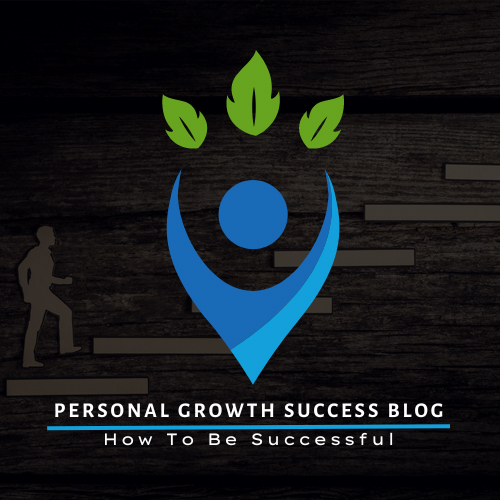
Are you feeling stuck in your current career? It’s common to experience a sense of dissatisfaction or frustration, which often leads professionals to consider making a change. Understanding how to navigate career transitions can be a game-changer for anyone looking to progress toward their ultimate career goals.
Transitioning to a new career can open up a plethora of new opportunities and provide increased job satisfaction. Whether you’re looking to switch industries or move up within your current field, a change can help you achieve your long-term career goals. So why hesitate? Fear of uncertainty and the loss of hard-earned benefits and seniority are common challenges. But with the right strategies and tools, you can successfully overcome these obstacles and attain a fulfilling and rewarding career. Let’s explore how to do just that.
Identifying Potential Career Paths
Finding the right career path can be a daunting task, but with proper planning and research, you can identify potential career paths that align with your skills, interests, and long-term goals. Here are some strategies to help you navigate this process:
1. Conduct a Thorough Self-Assessment
Before exploring potential career paths, it’s important to conduct a thorough self-assessment. This involves careful consideration of your current career, skills, interests, values, and long-term goals. Ask yourself questions such as:
-
- What do I enjoy doing?
- What are my strengths and weaknesses?
- What are my long-term career goals?
- What type of work environment do I prefer?
- What are my values and priorities?
By answering these questions, you can gain a better understanding of what you’re looking for in a career and what kind of work you’re best suited for.
2. Research Potential Career Paths
Next, research potential career paths that align with your strengths and interests. Start with job titles and descriptions that appeal to you and check industry publications and job boards for more information. Use career exploration websites to learn about different career fields and the skills and education required to succeed in them.
Additionally, consider reaching out to professionals working in your areas of interest for informational interviews. This can help you gain a better understanding of what it takes to succeed in a particular job or industry.
3. Attend Industry Events and Networking Opportunities
Attending industry events and networking opportunities can also be helpful in identifying potential career paths. This allows you to meet professionals in your areas of interest and gain a better understanding of the job opportunities and industry trends that are available. You can also broaden your professional network, which can be helpful when it comes to job hunting.
4. Evaluate Your Findings
As you gather information and explore potential career paths, evaluate your findings to determine which careers align best with your skills, interests, and goals. It’s important to consider the education, experience, and skills required for each job, as well as the salary and job outlook.
5. Develop a Career Plan
Once you’ve identified potential career paths, develop a career plan that outlines the steps you need to take to achieve your goals. This may involve gaining additional education or training, building relevant skills and experience, and networking with professionals in your target industry.
Crafting Your New Career Path
Crafting a new career path can be a challenging but rewarding journey. Before embarking on this path, it is crucial to start by assessing your skills and interests. Take time to think about what motivates you, what you are good at, and what you would like to achieve in your career. By doing this, you will be in a better position to identify potential career fields that align with your interests and skills.
Once you have identified potential career fields, it’s time to do in-depth research to get essential information about the job descriptions, potential career paths, and industry trends. This information will help you understand the qualifications and skills required to succeed in these fields.
It’s also essential to evaluate your transferable skills. These are skills that you have gained over time in your previous positions, and they can be useful in different fields. For instance, if you have excellent communication and leadership skills gained from your previous role as a project manager, these skills can be useful in other fields that require these skills, such as marketing or public relations.
After identifying the fields that interest you and evaluating your transferable skills, list the concrete steps you need to take to make a successful transition. This may involve gaining additional education or training, building relevant skills and experience, and networking with professionals in your target industry.
It’s essential to have a clear ultimate goal and ideal career profile in mind when crafting your new career path. This will help you stay focused and make decisions that align with your long-term aspirations.
Preparing for the Transition Phase
Career transitions can be an exciting yet daunting time. To navigate this journey successfully, it’s essential to have a solid plan in place for the preparation phase.
Here are some strategies to help you prepare for the transition phase:
1. Have a Clear Understanding of Your Current Position and Potential New Career Path
Before embarking on a new career path, it’s imperative to have a clear understanding of your current position and what you want to achieve in your potential new career path. Reflect on your strengths, weaknesses, and interests to determine the right career path for you.
2. Develop an Action Plan and Timeline with Realistic Goals and Deadlines
Once you have determined your new career path, develop an action plan with realistic goals and deadlines. Set both short-term and long-term goals, and ensure your timeline is achievable. This plan will help you stay focused and track your progress.
3. Build Your Professional Profile
Update your resume, cover letter, and online profile, making sure they are relevant to your new career path. Highlight any transferable skills and relevant work experience you may have. Also, consider gaining additional certifications or technical skills to bolster your profile.
4. Network with Professionals in Your Desired Industry
Networking is crucial when making a career transition. Connect with professionals in your desired industry to gain insights, industry knowledge and explore job vacancies that may arise. Attend industry webinars, join LinkedIn groups, and reach out to alumni from your educational institution.
5. Attend Career-Related Events, Seminars, and Workshops
Attending career-related events, seminars, and workshops is an excellent way to acquire industry insights and understand the current market trends. This helps you stay ahead of the curve and build relationships with industry experts.
6. Prepare Mentally and Emotionally for the Transition Phase
Career transitions can be challenging both mentally and emotionally. Set realistic expectations for yourself and be willing to take calculated risks. Take care of your mental health by practicing self-care and maintaining a strong work-life balance.
Gaining Professional Support
Navigating a career transition can be a challenging and overwhelming process. Whether you’re trying to switch careers, move up in your current field, or explore a new industry, it’s essential to have a support system in place to guide you through the journey. This is where gaining professional support comes into play.
Professional support can come in many forms, such as a career coach, mentor, or industry contact. These individuals can provide valuable insights and guidance as you navigate through your career transition. Here are some actionable steps to acquire professional support during your career change journey:
1. Conduct Informational Interviews: One of the most effective ways to gain professional support during a career transition is by reaching out to people in your professional network for informational interviews. Ask them about their own experiences changing careers or industries and gain advice on how to approach your own transition. This can provide valuable information, insights, and connections that you may not have discovered otherwise.
2. Seek Out a Mentor: Consider finding a mentor who can guide you through the transition process and provide relevant insights. A mentor can provide valuable feedback on your career goals and plans, offer relevant industry expertise, and help you stay motivated through the transition process.
3. Work with a Career Coach: A career coach can help you develop a career change plan and provide additional resources to assist in your transition. A career coach can assist in identifying transferable skills, assess your strengths and weaknesses, and connect you with relevant industry contacts.
4. Join Professional Organizations: By participating in professional organizations, you can make new connections and stay up-to-date on industry trends. Attending industry-specific networking events is an excellent way to meet individuals in your desired field, expand your professional network, and get involved in relevant conversations.
Gaining professional support during a career transition is essential for a successful transition. Seek out a mentor or career coach, conduct informational interviews, and attend networking events to connect with individuals who can provide valuable support, guidance, and resources to make your career change goals a reality.

Conclusion
In conclusion, successfully navigating career transitions requires a strategic approach that involves identifying potential career paths, crafting a new career path, preparing for the transition phase, and gaining professional support. It is essential to have a concrete career change plan while also remaining open to alternative career paths. Experimenting with new career fields and building a professional network can also be beneficial. As such, readers are encouraged to take advantage of the information provided in this article and begin their career transition journey, staying focused on their ultimate career goals while remaining flexible in their approach. By doing so, they increase their chances of a successful career transition and a more fulfilling professional life.







